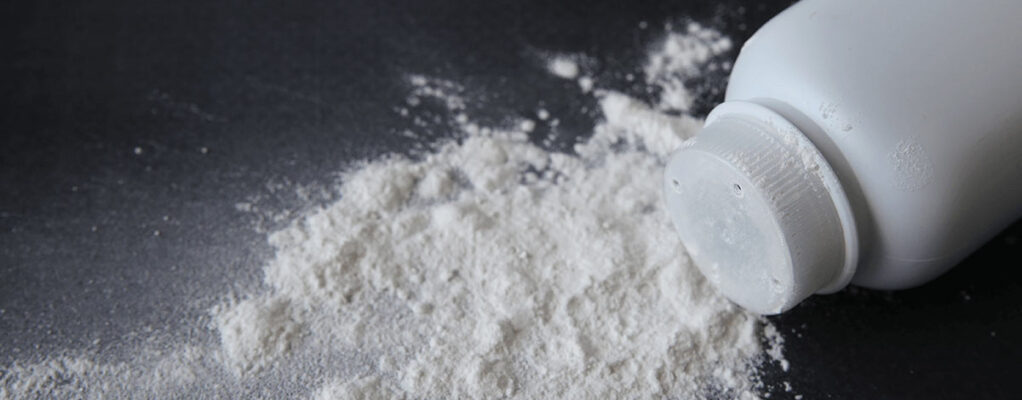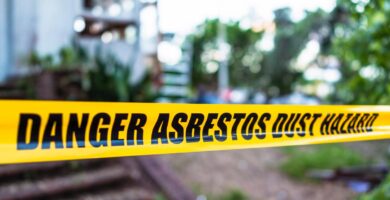Johnson & Johnson may have altered contamination tests so that the company could declare its baby powder free of asbestos. This is what the attorneys representing four mesothelioma victims argued to a New Jersey jury on February 5, 2020.
This comes after a shocking Federal Drug Administration (FDA) discovery of trace amounts of cancer-causing asbestos in samples of Johnson’s Baby Powder®, Johnson & Johnson recalled around 33,000 bottles in October 2019.
The pharmaceutical giant attempted to show its innocence by conducting its own tests on the baby powder. These tests indicated no detectable amounts of asbestos.
However, the mesothelioma victims taking legal action against Johnson & Johnson after exposure to its baby powder are far from convinced.
Four Johnson’s Baby Powder Users Sued After Developing Mesothelioma
On September 11, 2019, a jury ruled in favor of four plaintiffs, awarding them a combined $37.3 Million in compensation against Johnson & Johnson. All of them were exposed to asbestos in Johnson’s Baby Powder as babies.
Each eventually developed mesothelioma, and with no other known asbestos exposure history, they argued that Johnson’s Baby Powder was to blame for their deadly cancer.
The jury in the case ruled that:
- The victims were exposed to asbestos in the company’s talcum powder products.
- Johnson & Johnson failed to warn about the dangers of its products.
The pharmaceutical giant has faced a slew of asbestos lawsuits over the past few years from those who claim its baby powder leads to deadly diseases like ovarian cancer and mesothelioma.
Plaintiffs’ Lawyers Say J&J Rigged Tests to Hide Asbestos
Lawyers representing the mesothelioma victims are urging a new jury to also strike Johnson & Johnson with punitive damages — money the corporation would have to pay as punishment for their actions.
In response to Johnson and Johnson’s asbestos-negative baby powder tests, the plaintiffs’ lawyers argued that the company adjusted the detection limit of its tests to produce the results it wanted.
“They fixed the tests so they can pass them.” — Chris J. Panatier, plaintiffs’ attorney
In addition to this, the victims’ attorneys made other claims concerning the corporate giant’s negligence in this case.
The plaintiffs’ attorneys argued that Johnson & Johnson:
- Demonstrated “reckless indifference” because it was aware of small amounts of asbestos in its baby powder and the negative effects of “buildup over time.”
- Withheld information from the FDA, failing to provide any testing data to the government agency after 1973.
However, Johnson & Johnson consistently denies that its products contain asbestos and is fighting every claim the plaintiffs’ lawyers have made.
J&J Argues Tests Exceed Industry Standards
In response to the plaintiffs’ attorneys’ claims, Johnson & Johnson’s defense lawyers asserted that the company’s baby powder is asbestos-free and that its testing methods were sound — in fact, more rigorous than industry standards require.
They further argued that detection limits are typical in order to avoid “false positives” when testing, and Johnson & Johnson had no reason to believe that their talc products were likely to harm consumers.
“You don’t stay in business for 125 years doing the types of things that these lawyers have alleged,” argued Brown, one of Johnson & Johnson’s defense attorneys. “By knowingly, deliberately selling products that you know can hurt people…”
Did J&J Put Customers At Risk?
A central question the prosecution has urged the jury to consider is: What was Johnson & Johnson’s mindset when it sold its allegedly dangerous baby powder? Were they truly considering the wellbeing of their clients, or did they fail to keep their customers safe?
Many of Johnson & Johnson’s actions leave individuals uncertain of their intentions.
This skepticism is due, in part, to:
- Johnson & Johnson’s failure to provide testing data to the FDA.
- The FDA’s findings of trace asbestos contamination in bottles of Johnson & Johnson’s baby powder.
- The string of lawsuits involving cancer victims with no obvious exposure to asbestos or other carcinogens (cancer-causing agents).
“[Johnson & Johnson] chose the wrong path, a path that ended up placing innocent people at risk.” — Christopher M. Placitella, plaintiffs’ attorney
Ultimately, the jury will decide whether Johnson & Johnson recklessly put consumers at risk and, if so, how it should be held accountable in a civil court of law.
Sadly, one plaintiff did not survive to hear the first asbestos lawsuit trial verdict, but hopefully the other three victims will feel a sense of justice from the outcome of their case.











